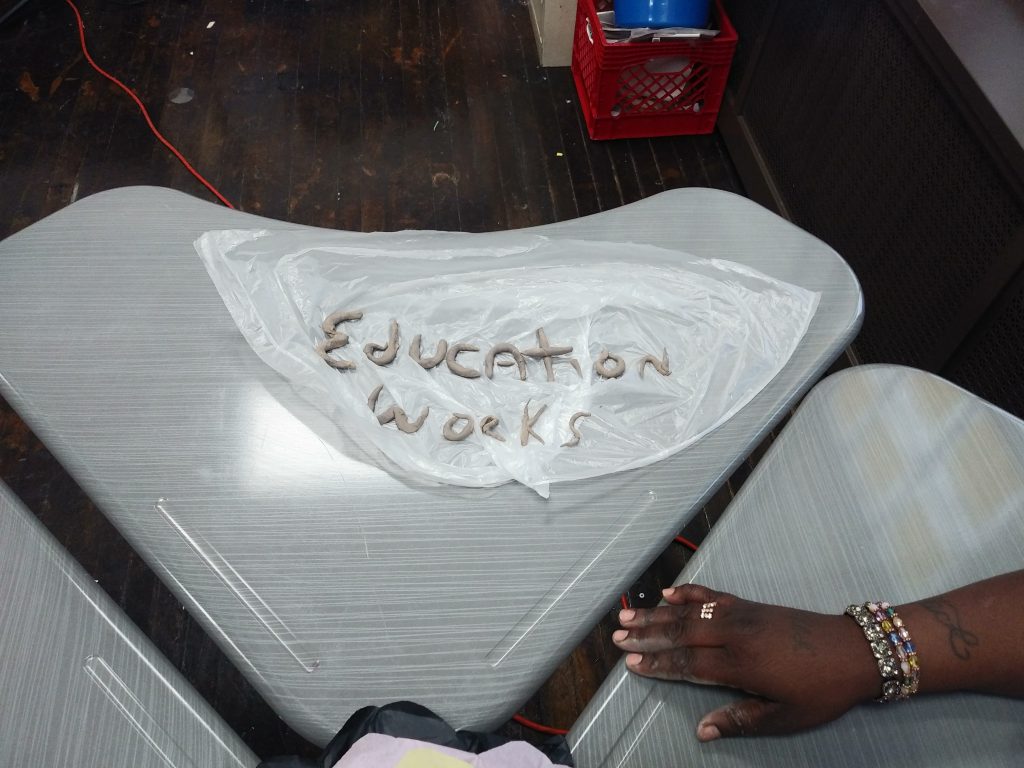
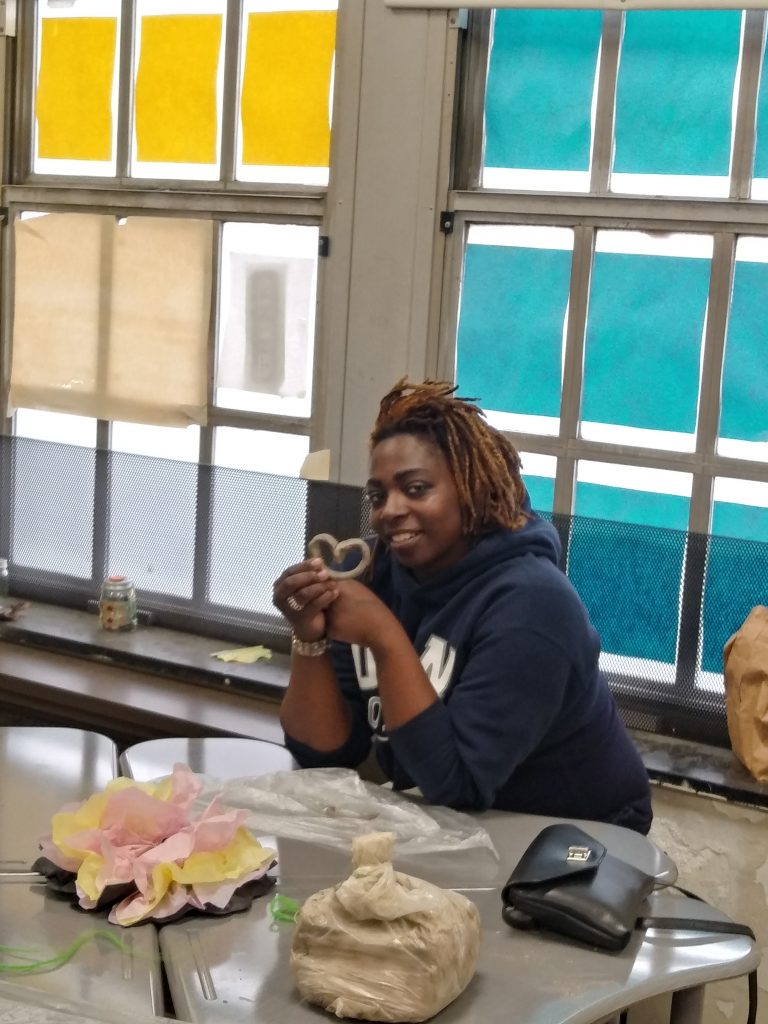
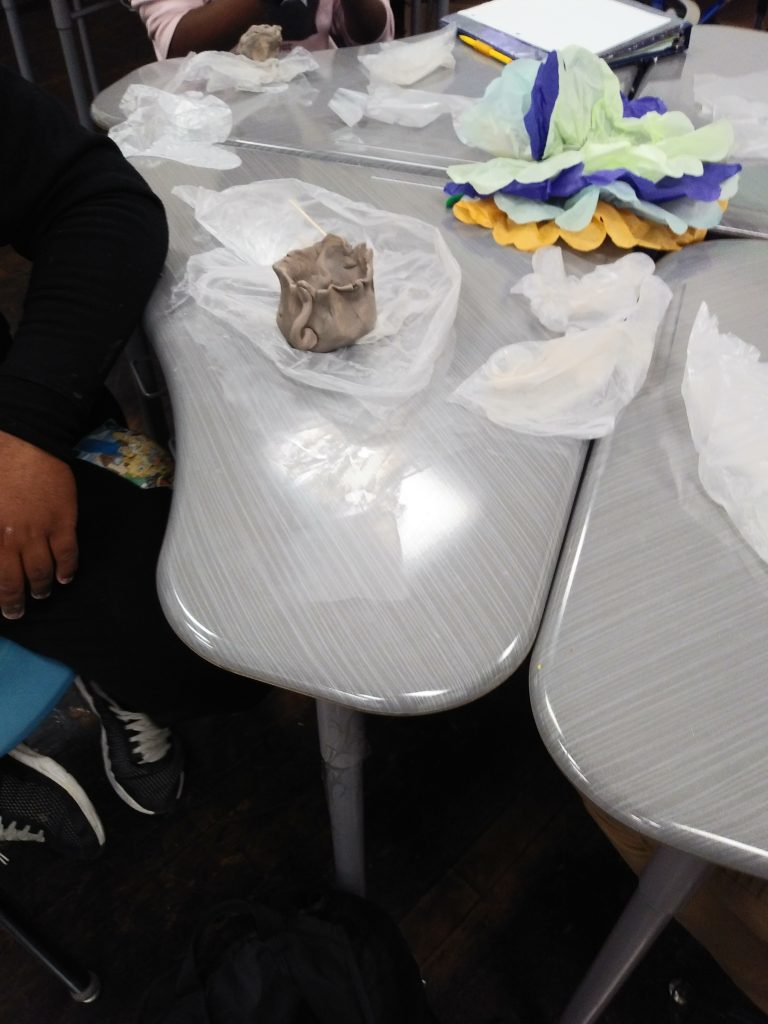

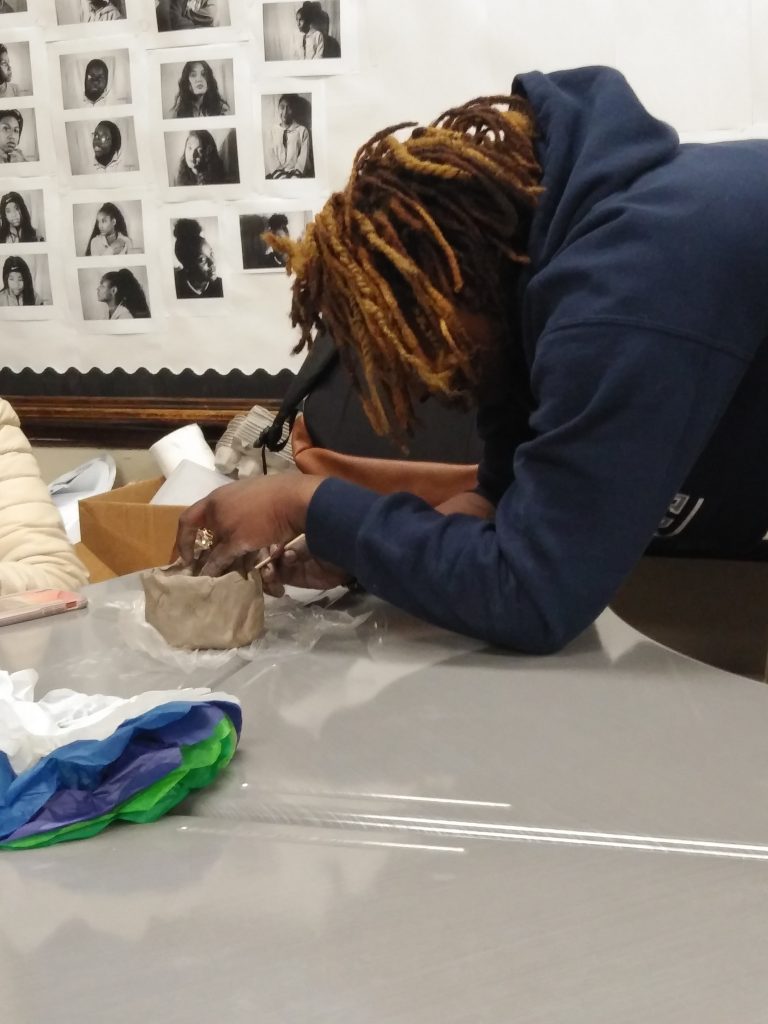

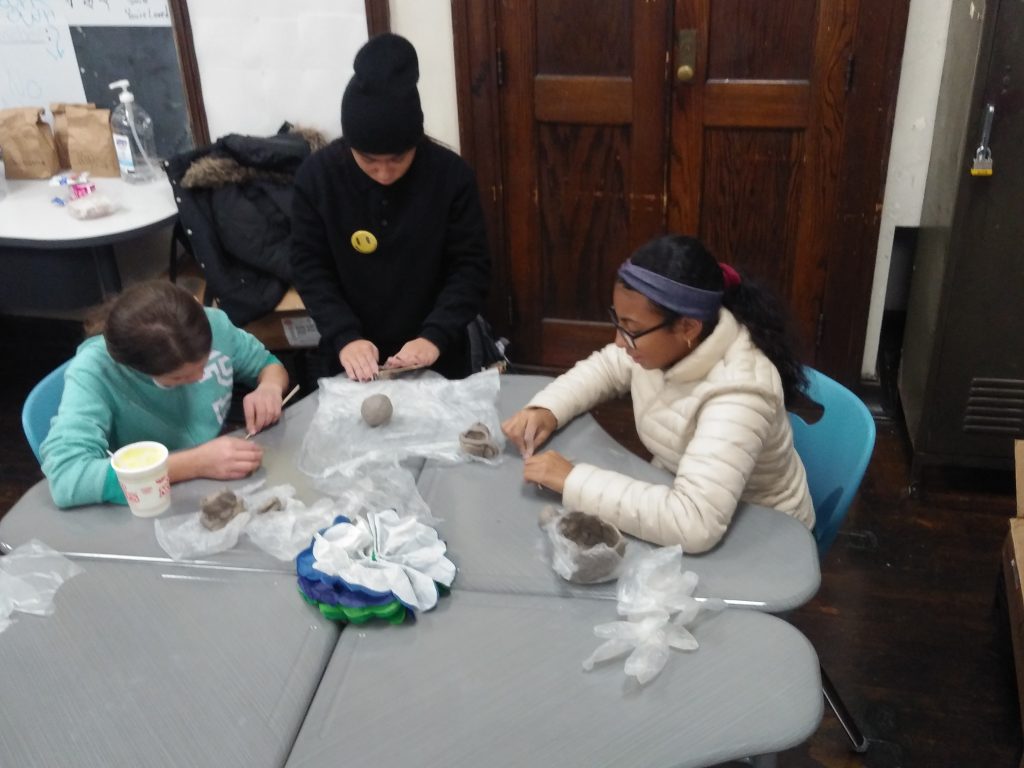

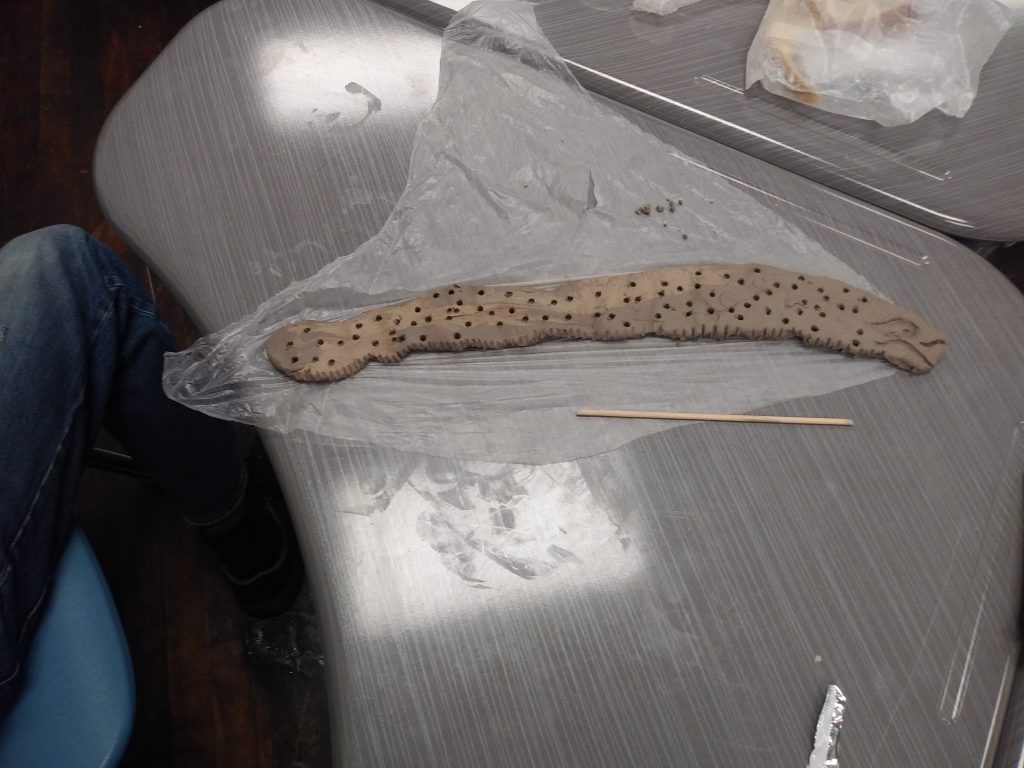

At Penn Treaty, we started off today’s lesson with giving each student a piece of water based clay and going into great detail on the history of how this material was being utilized. We talked about how clay is a form of a rock or a mud stone. Next, we did a demonstration of some basic techniques such as scoring, the pinch pot, and coils so they could get a sense of not only how this material works but how flexible it is too. We also told them how important it was to make sure their pinch pot had the same thickness of clay all around so it would not fall apart, and the clay must stay wet and moist at all times. After the demo, the students had the opportunity to freely create whatever was in their subconscious mind with these techniques in mind. I was very impressed with how engaged they were with this project and the sculptures that they created in the end. Some of the thing they made was snakes, Mickey Mouse, a pumpkin, cups, plant pot, an eel, a boomerang, bear, a heart with coils, and words with coils. After they finished their pieces, we finished off the lesson by talking about the process of drying out the clay so it could go inside of the kiln so it could heat up to a point that it become solid like a hard stone. We also mentioned how there’s a special type of paint called glaze specifically used to paint ceramic pieces once they’re fired. One thing I have to say is that I love using coils to build ceramic vases over the pottery wheel because I was able to be more creative and control the direction of the piece.

